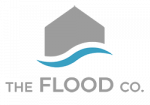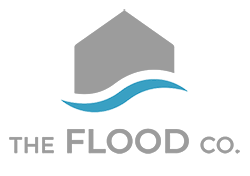A Leaking Roof Leads To Moldy Walls In The Server Room
Video Transcript
I’m in a server room doing a mold inspection, and there’s a leaky roof. It’s come down some of these walls and a couple of different places and let’s go up in the ceiling here and take a look.
There’s a metal plate that doesn’t look pretty. Somebody thought it’d be a good idea to to wrap with drywall and the drywall’s gotten wet over time. And hence, heavy amounts of mold in this triple layers of drywall.
A lot of mold, not a good situation and not a good area to be able to clean it up without disturbing of other things.
A Leaking Roof Can Lead To Mold
I have a leaking roof. It’s not a big leak, and I’m trying to get it patched up myself. But it’s caused mold in my home. Should I call a professional?
A leaky roof is one of the most common reasons for mold in homes, which can cause health problems and damage to the building. Although you may feel like you’re saving money by doing this kind of repair yourself, if you’re not sure what you’re doing, you could end up causing more damage than good and putting yourself at risk of future leaks. Even a small amount of water penetrating your ceiling can cause mold to grow near your HVAC system and ducts, where it’s difficult to clean without professional equipment that homeowners don’t generally have access to.
If you’re living in a house with a leaking roof, you might be thinking that it’s no big deal. After all, your parents might have just told you not to worry about it. Or maybe the rain is falling on your head and you’re in a hurry to get somewhere else. Or maybe you’re sleeping and don’t notice the drips or puddles or even the leaks until it’s too late.
In any case, if the roof is bad enough, mold can start to grow on some of your belongings. This could include anything from books to furniture to clothes. Mold usually starts with discoloration, turning things black or green—and once that happens, well, you probably won’t want to wear those things again anyway.
But if mold isn’t noticed quickly, it can spread and ruin even more of your belongings. Unlike some other types of household dangers, there’s no way to avoid mold entirely—you always need some level of moisture in order for it to grow. So if the water is getting into your ceiling due to a leaky roof, the only way to prevent mold from growing is by fixing the leak as soon as possible.
A leaking roof is a common problem and one that has the potential to cause a lot of issues. One of these problems is mold. Mold can cause health problems, allergies, and respiratory problems, as well as damage to your home’s structure and your belongings.
If you have a roof that’s leaking, water can seep through and cause mold. Mold can make your entire home smell bad, but it can also be dangerous to your health.
Even though a leaking roof is an issue you should take care of as soon as possible, the longer it’s left alone, the more damage it can do. Mold caused by a leaking roof can do more damage the longer the water sits.
While mold on your ceiling may not be something you think about too often, it’s important to realize that when water is leaking through your roof, this can lead to some serious consequences. In addition to getting wet in the first place, you may also start to notice mold appearing on your ceiling, walls, and even inside your furniture. If left unattended long enough, mold growing in your home can cause serious damage to your ceiling and walls. If you’re lucky enough to catch any damage early on, a mold removal expert can alleviate some of the issues that may arise due to this unfortunate circumstance. However, once mold starts to form on walls or ceilings (especially if it has been around for a while), there is no way to remove it without removing the affected area. Long story short—leaking roofs can be harmful if not dealt with quickly and properly!
If you suspect you have mold from a leaking roof, give us a call at 801-294-7452. We are available 24 hours a day 7 days a week for emergency service.
- How to Get Rid of Bathroom Mold (And Why You Should Call a Pro) - June 5, 2025
- What Should I Do Immediately After Water Damage? - May 5, 2025
- How Much Does Mold Remediation Cost? - March 7, 2025

